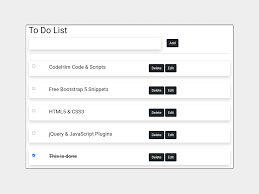Bootstrap 5 How To, Bootstrap 5 is a popular front-end framework that helps developers create responsive, mobile-first websites quickly and efficiently. With its extensive library of components and utilities, Bootstrap makes it easier to build beautiful, functional web applications. This guide will walk you through the steps to get started with Bootstrap 5.
1. Understand What Bootstrap Is
Bootstrap is an open-source front-end framework designed for web development. It provides a collection of CSS and JavaScript components that help you design responsive and visually appealing websites without having to write extensive custom code.
Key Features:
- Responsive Grid System: Easily create layouts that adapt to different screen sizes.
- Pre-designed Components: Use ready-made components like buttons, forms, modals, and navigation bars.
- Customizable: Tailor the framework to suit your project’s needs through customization.
2. Setting Up Your Project
To use Bootstrap 5, you can either include it via a CDN (Content Delivery Network) or download the files directly. Here’s how to set up your project using both methods.
a. Using a CDN
- Create a new HTML file.
- Add the following links to the
<head>section of your HTML:
b. Downloading Bootstrap
- Visit the Bootstrap website.
- Download the latest version of Bootstrap.
- Unzip the files and include the CSS and JS files in your project directory.
- Link them in your HTML file:
3. Create a Responsive Layout
Bootstrap’s grid system allows you to create responsive layouts easily. The grid is based on a 12-column system, which can be customized for various screen sizes.
Example of a Simple Grid:
In this example, three columns will stack on smaller screens and sit side by side on medium and larger screens.
4. Use Pre-designed Components
Bootstrap 5 comes with a range of pre-designed components that can enhance your website’s functionality and aesthetics. Here are a few popular components:
a. Navigation Bar
b. Buttons
5. Customize Bootstrap
You can customize Bootstrap to fit your design preferences. There are several ways to do this:
a. Custom CSS
Create a separate CSS file and link it after the Bootstrap CSS file. Override Bootstrap styles as needed.
b. SASS Variables
If you downloaded Bootstrap’s source files, you can customize variables in SASS. Modify values in the _variables.scss file to change colors, spacing, and more.
6. Explore JavaScript Components
Bootstrap 5 includes several interactive JavaScript components such as modals, tooltips, and carousels. These components require the Bootstrap JavaScript file and can be initialized using data attributes or JavaScript.
Example of a Modal:
Conclusion
Getting started with Bootstrap 5 is straightforward and can significantly speed up your web development process. By understanding the framework’s features, setting up your project, and utilizing its components, you can create responsive and visually appealing websites with ease. Explore Bootstrap’s documentation for more detailed examples and advanced features, and happy coding!




